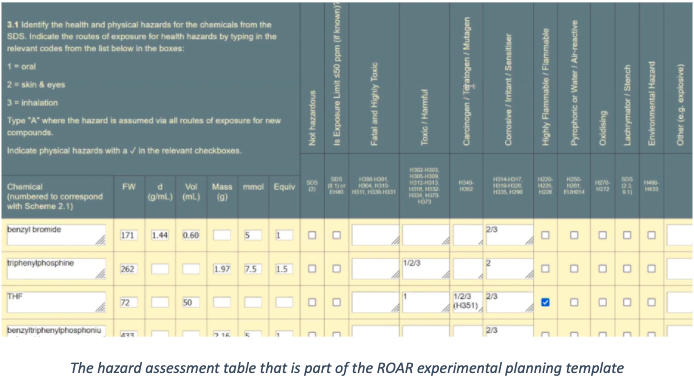Dr. Ben Deadman, facility manager for the Centre for Rapid Online Analysis of Reactions (ROAR) in the Department of Biochemistry at Imperial College London, England, was an early adopter of LabArchives ELN for Research which has been used at his institution since 2018. He recently shared his experience with LabArchives ELN for Research.
ROAR provides advanced instrumentation, expertise, training and software for analysis of chemical reactions. Much of their work involves high throughput experimentation, kinetics studies, and large automated batch experiments that generate a lot of data very quickly. They needed a way to more efficiently organize and archive those data and they were looking to adopt an electronic lab notebook (ELN) for this purpose.
Initially, LabArchives ELN for Education was used in undergraduate courses. In 2019 it was adopted by the doctoral training program as well, which included about 40 research users. Now, in 2021, there are approximately 400 users on their campus as the University purchased a license for all research and teaching staff.
When the COVID-19 pandemic hit in 2020, the way they had to operate changed dramatically. Initially everyone left the lab and worked remotely, collaborating and sharing analyses through LabArchives ELN. When researchers returned, they were split into two shifts, where one shift would work in the laboratory for a week while the other worked remotely, planning and analyzing experiments. Then they would switch. This posed several issues. With the fractured team, communication was more difficult, and the two shifts had to coordinate remotely. They used LabArchives ELN for communicating, sharing data, planning experiments, and coordinating. Additionally, the virtual sign off feature allowed for approval of experiments that ensured things continued to operate smoothly and that nothing was missed, even with a split team.
They chose LabArchives ELN as their ELN solution for several reasons:
- LabArchives is not discipline specific so it could be used as a college wide ELN.
- LabArchives was already being used in undergraduate teaching labs. This simplified the transition for students from undergraduate to postgraduate as students were already familiar.
- The low per-user price point for standalone licenses meant they could grow the user base organically.
- There was no need to install software.
- The virtual sign-off of experiments was important, especially after COVID protocols where the team was split, and things could be more easily missed.
Dr. Deadman emphasized that the LabArchives ELN provided a simple transition from traditional paper notebooks to an electronic format, or the “paper to glass” transition.
ROAR uses several widgets to standardize experiment planning and risk assessment. Once generated with the Widget Manager, these widgets, or templates, can be shared amongst notebook users. Dr. Deadman shared a common experimental planning and risk assessment template that they use. This template includes experimental information (title, hazards), protocols, risk assessment, and relevant safety, waste, and emergency procedures. They also use Chemical Sketcher by ChemDoodle to insert the chemical structures and write out the reaction. Using this tool, the chemical structure is in a searchable format for later referencing.
Because this template mimics a paper form the researchers already used, it was easily adopted by users. It takes a bit longer to fill out than a paper version, however, after the first time, a user can copy a completed form for a related experiment and make the necessary adjustments.
He noted that an ELN has the bonus of being easily accessible from home. So, when it comes time to write, lab notebooks do not need to be taken home from the lab to begin writing.
Using a shared notebook for the centre helps with collaboration as well as the sharing of Standard Operating Procedures. Dr. Deadman recommends using shared group notebooks. This way the PI or coordinator maintains ownership when researchers leave the group. It encourages collaboration and the sharing of best practices. It also encourages those that have a more difficult time transitioning as they can see the capabilities demonstrated by veteran users. The shared notebook also allows for the distribution of widgets/templates and Standard Operating Procedures that are used by all researchers.






